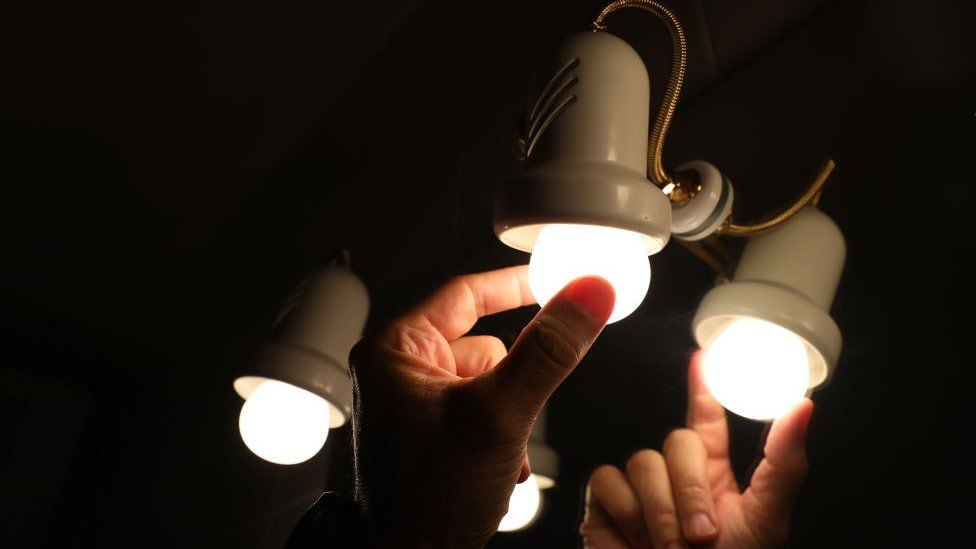Can you turn off the light for several hours a day? This has been requested by the governments of Japan Y Australia to its citizens.
LOOK: Attacks on civilians and a Zelensky who does not want to negotiate: where is the war in Ukraine going?
Japan urged people living in and around the capital Tokyo to use less electricity, and specifically that they turn off unnecessary lights for three hours starting at 3 in the afternoon.
Meanwhile, in Australia, residents of New South Wales – a state that includes the country’s largest city, Sydney – have been told they should not use electricity between 6 p.m. and 8 p.m.
Both countries are facing extreme weather conditions these days.
Over the weekend, the temperature in central Tokyo exceeded 35°C, while the city of Isesaki, northwest of the capital, recorded a record high of 40.2°C, the highest temperature ever recorded in June. for Japan.
In the case of Australia, the cold wave has caused temperatures to drop “between 6 and 10 degrees below normal,” Sarah Scully, an expert at the Australian Bureau of Meteorology, said on her Twitter account.
Behind the request to reduce consumption before this wave of heat and cold respectively, there is the same problem: power shortage.
just the air conditioning
Japan’s government estimates that the country’s energy supplies will shrink as the hotter days pass. Although the warning has grown louder these days, authorities have warned for weeks of an energy crisis as temperatures rise.
The Ministry of Economy, Commerce and Industry requested that unnecessary lights will be turned offbut that they could “use the air conditioning properly and hydrate during the hot hours” to avoid possible dizziness.
Last Sunday, the ministry warned that it expected electricity generation capacity to fall and, therefore, the ability to maintain stable supply.
Although electricity providers are working to increase supply, the ministry said the situation was “unpredictable” as temperatures rise.
“If there is a surge in demand and sudden supply problems, the reserve margin will fall below the required minimum of 3%,” he said.
Chris Bowen, Australia’s energy minister, has said that people should not use electricity in the evening time range if “they have that possibility” and has called on people to conserve as much energy as possible.
Despite the restrictive measures, he said he was “convinced” that blackouts could be avoided.
no supplies
Japan’s power supply has been tight since an earthquake in its northeastern region last March forced some nuclear power plants to shut down. suspend its operations.
They have also closed several aging fossil fuel plants in a bid to reduce carbon dioxide emissions.
In the case of Australia, we are talking about one of the largest exporters of coal and liquefied natural gas in the world. Three quarters of the country’s electricity is still generated from coal.

In the last weeks, Australia has been hit by supply disruptions.
On the one hand, at the beginning of the year the floods affected some coal mines. On the other hand, around a quarter of Australia’s coal-fired electricity generation capacity is currently out of service due to unexpected outages and scheduled maintenance.
High demand, low reserve, high price
Whether due to the need to put the air conditioning or heating, in both countries The demand for electricity has increased.
And, at the same time, the price. And this is one global trend.
Already during the past year, Europe was registering an increase in electricity. In September, prices reached record levels for several weeks.
In Spain did not ask citizens to turn off the lights at certain timesbut there was a measure that, without a doubt, has moved the population to change their consumption habits.
As of June 2021, a price map was created where a distinction is made between peak, flat and valley hours. Thus, the hours where it is cheaper to put a washing machine is between 12 at night and 8 in the morning and, the most expensive time slot, from 10 a.m. to 2 p.m. and between 6 p.m. and 10 p.m.
At that time, there was already low energy reserves and a scenario where demand was rising but supply was not keeping up.
Added to this was the crisis in raw materials, promoted by a drop in inventory after the reopening of the economy as restrictions due to the pandemic eased.
The final touch (for now) to this cycle of shortages and rising prices came in February, with Russia’s invasion of Ukraine.
Some power producers have seen costs soar as global coal and gas prices rise due to sanctions imposed on Russia.
Source: Elcomercio
I, Ronald Payne, am a journalist and author who dedicated his life to telling the stories that need to be said. I have over 7 years of experience as a reporter and editor, covering everything from politics to business to crime.

:quality(75)/cloudfront-us-east-1.images.arcpublishing.com/elcomercio/GUZTCNJNGA3C2MRYKQYDAORVGM.jpg)





